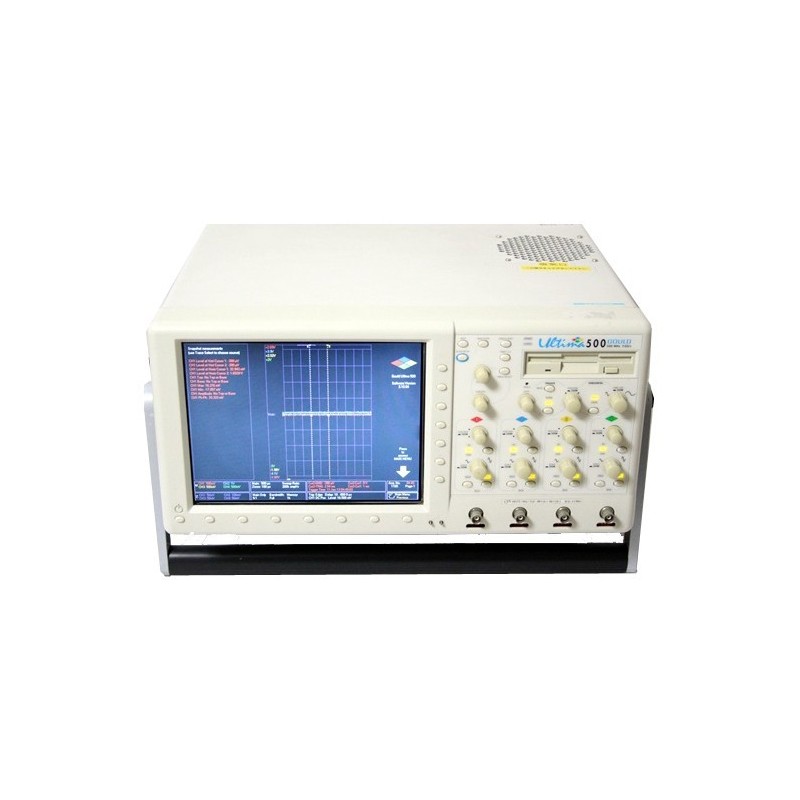










From the company that introduced the first Digital Storage Oscilloscope (DSO) comes another step in performance and capability - the Gould Ultima 500. Combining the acquisition power of a high performance 4-channel DSO with the flexibility and features of a PC, Ultima 500 simplifies data handling by effortlessly moving from capture to report in one compact unit.
Users will also find Ultima 500's portability especially useful for those applications where, up until now, a separate digital storage oscilloscope and a PC have typically been required.
A unique dual mode interface combines the look and feel of both a DSO and PC in a single integrated operating system. All controls are equally accessible using traditional front panel controls and through mouse and keyboard. No need for users to learn a different interface. Ease of use is further simplified using Ultima's on-board menu editor, which enables simple user customization of the user interface, limiting menu selections to the minimum required for any given application.
Eckdaten:
Das „DSO“ im Ultima:
2 GS/s Abtastrate transient
25 GS/s Abtastrate ETS
Vier Kanäle
Hochauflösender Farbbildschirm 10,4“ SVGA 800x600
8 oder 12 Bit Auflösung
4 * 500 MS/s mit 12 Bit (oder 2 * 1 GS/s oder 1 * 2 GS/s)
2 MS/s Abtastrate im HighRes-Dithering Modus mit 12 Bit
200 kWorte oder 1MWort Speicher jeKanal
leistungsfähige TriggerTools
Speichersegmentierung
Kalibrierte Nullpunktunterdrückung
Leistungsfähige Mathematik mit FFT, Graphen und Histogrammen
Der „PC“ im Ultima:
Windows-PC mit Pentium Prozessor
Betriebssystem NT 4.0
Diskette und Festplatte
Schnittstellen:
Seriell, parallel, USB, Maus, Tastatur, externer Monitor, Sound, Ethernet
Optionen: LS120 Laufwerk und IEEE488
PC nutzbar für eigene Applikationen
2 freie PCI-Steckplätze für eigene Karten
Eigene Software installierbar
Die „DSO-Workstation“
Bedienung über DSO-Frontplatte, über Tastatur und Maus unter Windows oder remote über
Netzwerk
Analysefunktionen lassen sich mit externen Programmen erweitern
Cut & Paste mit MS-Office
DDE-Datentransfer mit anderen Programmen
Kommunikation über alle modernen Schnittstellen im Intranet und Internet
ActiveX / DCOM-Schnittstelle zur Kommunikation mit Programmen wie DIADEM, LABVIEW, HP-VEE
„Programmers Library“ zur Eigenprogrammierung unter VB und C++
„Interface Editor“ zum Anpassen der Menüs je nach Anwendung